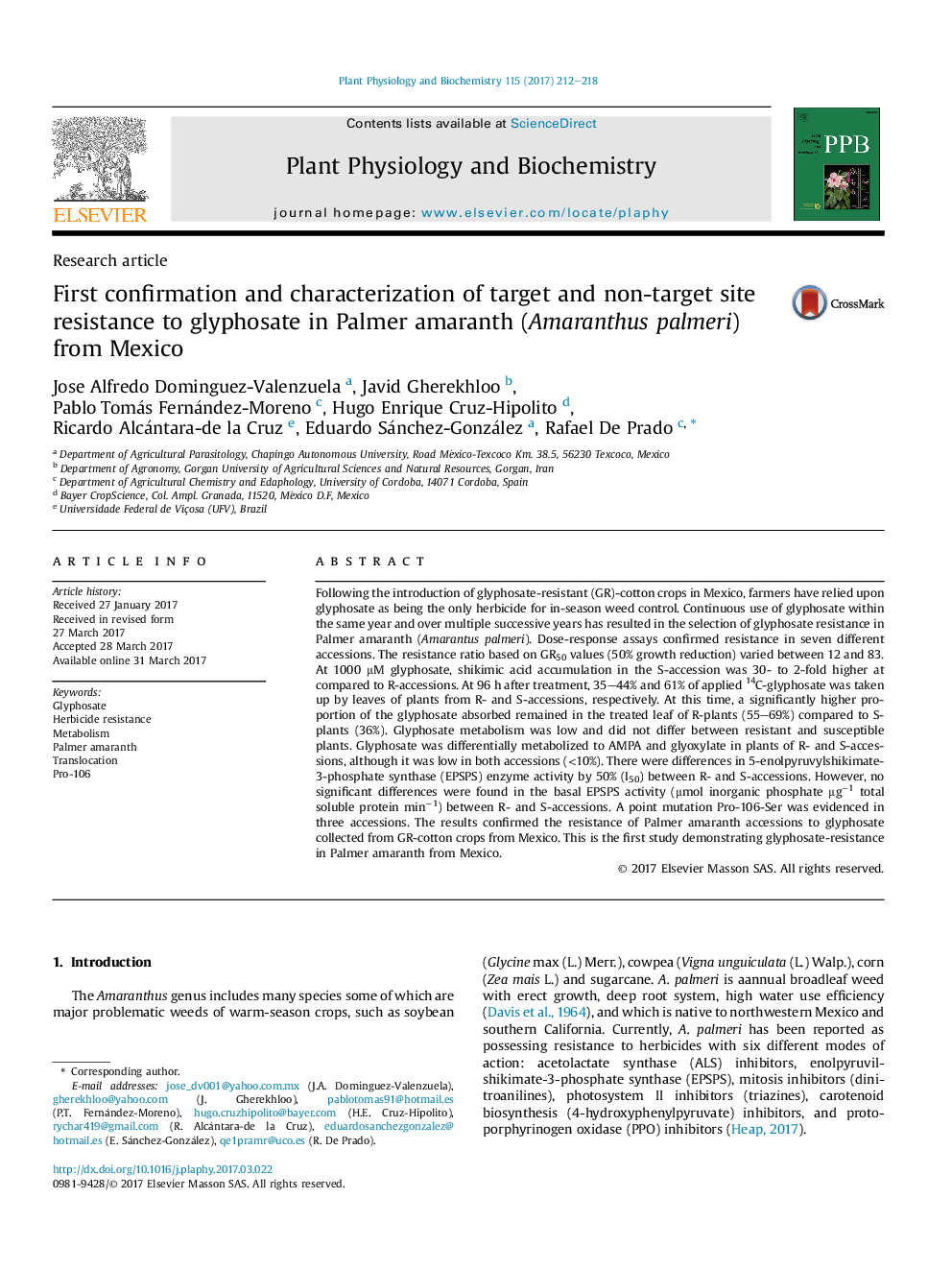| کد مقاله | کد نشریه | سال انتشار | مقاله انگلیسی | نسخه تمام متن |
|---|---|---|---|---|
| 5515386 | 1541906 | 2017 | 7 صفحه PDF | دانلود رایگان |

- In 1998, glyphosate-resistant cotton crops were introduced into Mexico, and were easily adopted by Mexican farmers resulting in a complete transformation of weed management.
- Different glyphosate-resistant Amaranthus palmeri accessions were studied to elucidate the mechanism(s) responsible for resistance.
- This research study is the first one demonstrating resistance to glyphosate in A. palmeri from Mexico.
- Of the seven glyphosate-resistant accessions studied, four of them exhibited Non Target Site Resistance, and three of them exhibited Target Site Resistance, as well as Non Target Site Resistance.
Following the introduction of glyphosate-resistant (GR)-cotton crops in Mexico, farmers have relied upon glyphosate as being the only herbicide for in-season weed control. Continuous use of glyphosate within the same year and over multiple successive years has resulted in the selection of glyphosate resistance in Palmer amaranth (Amarantus palmeri). Dose-response assays confirmed resistance in seven different accessions. The resistance ratio based on GR50 values (50% growth reduction) varied between 12 and 83. At 1000 μM glyphosate, shikimic acid accumulation in the S-accession was 30- to 2-fold higher at compared to R-accessions. At 96 h after treatment, 35-44% and 61% of applied 14C-glyphosate was taken up by leaves of plants from R- and S-accessions, respectively. At this time, a significantly higher proportion of the glyphosate absorbed remained in the treated leaf of R-plants (55-69%) compared to S-plants (36%). Glyphosate metabolism was low and did not differ between resistant and susceptible plants. Glyphosate was differentially metabolized to AMPA and glyoxylate in plants of R- and S-accessions, although it was low in both accessions (<10%). There were differences in 5-enolpyruvylshikimate-3-phosphate synthase (EPSPS) enzyme activity by 50% (I50) between R- and S-accessions. However, no significant differences were found in the basal EPSPS activity (μmol inorganic phosphate μgâ1 total soluble protein minâ1) between R- and S-accessions. A point mutation Pro-106-Ser was evidenced in three accessions. The results confirmed the resistance of Palmer amaranth accessions to glyphosate collected from GR-cotton crops from Mexico. This is the first study demonstrating glyphosate-resistance in Palmer amaranth from Mexico.
Journal: Plant Physiology and Biochemistry - Volume 115, June 2017, Pages 212-218